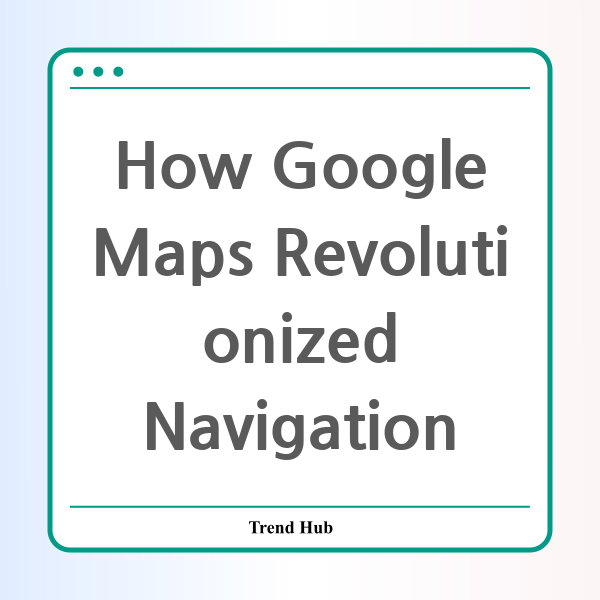* This website participates in the Amazon Affiliate Program and earns from qualifying purchases.

Did you ever stop to think about how much easier it is to navigate the world today, thanks to Google Maps? As we celebrate its 20th anniversary, it’s worth diving into the remarkable journey of this groundbreaking technology and the unsung heroes behind it.
Google Maps has transformed from a modest project in a spare bedroom in Sydney to a ubiquitous tool used by over 2 billion people monthly. Its success story begins with Stephen Ma and his co-founders who, in the early 2000s, identified a significant gap in the online mapping landscape dominated by cumbersome platforms like MapQuest. While MapQuest provided essential mapping services, it was outdated, forcing users to print turn-by-turn directions.
After transitioning back to Sydney from Silicon Valley, Ma, along with fellow tech enthusiasts Noel Gordon and the Rasmussen brothers, Jens and Lars, kicked off their startup, Where 2 Technologies. They aimed to develop a user-friendly mapping service that utilized groundbreaking web technologies. This endeavor would lead them to create a mapping platform that allowed for dynamic, real-time updates—essentially laying the groundwork for what would eventually become Google Maps.
In March 2004, facing challenges with funding, the Where 2 team showcased their unique web-based mapping demo to Sequoia Capital, only to be met with disappointment. However, this setback paved the way for a pivotal introduction to Google, where the co-founders impressed Larry Page with their vision of a browser-based mapping solution. This moment was critical as it shifted the focus from desktop software to a web-based application, ensuring a more extensive reach and usability.
Utilizing a cutting-edge web programming technique known as Ajax allowed the developers to create an interactive map experience, revolutionizing how users interacted with geographic information. The demo was a runaway success, leading to Google’s acquisition of Where 2 Technologies, alongside its intellectual property.
When Google Maps launched later that same year, it opened up a new era for digital navigation. Today, Google Maps is more than just a navigation tool; it's a comprehensive resource that integrates restaurant guides, public transport schedules, and location-based recommendations—all at our fingertips. Its influence extends far beyond personal navigation, powering various platforms like Uber, Airbnb, and countless others reliant on accurate locational data.
However, as we revel in the convenience of Google Maps, it’s crucial to acknowledge the evolving implications of this technology. With the proficiency of navigation technology, concerns about data privacy and cognitive reliance are more relevant than ever. Extended use of mapping applications has been linked to cognitive decline, particularly with respect to spatial memory, highlighting the need for balanced technology usage.
Stephen Ma, now stepping back into the spotlight after decades of anonymity, emphasizes the importance of recognizing all contributors to this monumental project, shedding light on the collective efforts that brought Google Maps to life. In an age dominated by tech giants, the achievements of smaller teams can often go unnoticed, but it’s evident that many hands shaped the global phenomenon we rely on today.
As Ma shifts his focus toward innovative healthcare solutions with Reggie Health, the legacy of Google Maps continues to expand its impact, shaping not just how we see the world geographically, but also highlighting the incredible journey of technology from conceptual beginnings to daily essentials. With knowledge of its beginnings, we can appreciate the significance of Google Maps not just as a product, but as a monumental leap in our ability to navigate the complexities of life in the digital age.
* This website participates in the Amazon Affiliate Program and earns from qualifying purchases.